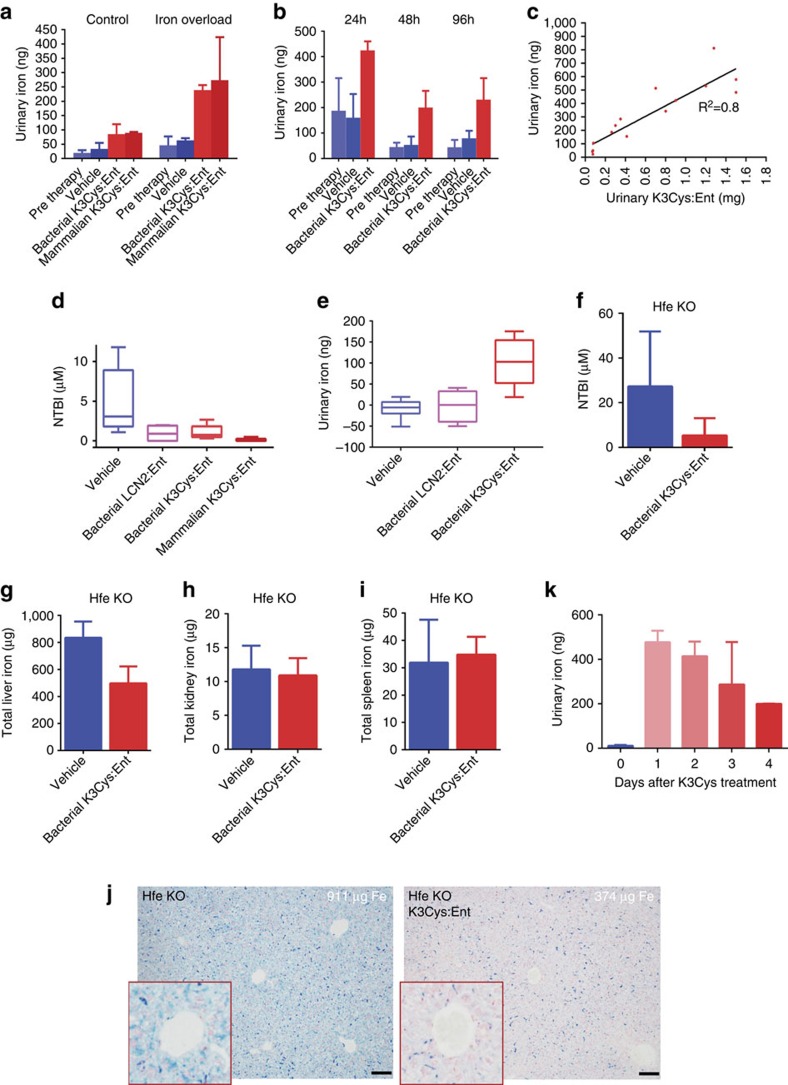Figure 7. K3Cys:Ent transferred iron to the urine in murine models of experimental iron overload.
(a–c) Urine was collected for 3 h after i.p. treatment of CFW mice with K3Cys:Ent (0.5 mg in 0.5 ml PBS per mouse) or an equal volume of saline (‘Vehicle'). (a) Total urinary iron was significantly increased by bacterially or mammalian expressed K3Cys whereas saline was not effective in increasing urine iron. (Control (n=26 assays): Pre therapy versus Saline P=0.48; Saline versus Bacterial K3Cys P=0.03; Saline versus Mammalian K3Cys P=0.009; Mammalian K3Cys versus Bacterial K3Cys P=0.4. Iron Overload (with 0.5 mg g−1 iron-dextran; n=18 assays): Pre therapy versus Saline P=0.12; Saline versus Bacterial K3Cys P=0.002; Saline versus Mammalian K3Cys P=0.05; Mammalian K3Cys versus Bacterial K3Cys P=0.77.) K3Cys:Ent exported iron to the urine at different time points. (b) Time course of urinary iron excretion. Saline was ineffective (P=NS), whereas K3Cys resulted in iron export at every time point (at 24 h: n=18 assays; Pre therapy versus Bacterial K3Cys P=0.0005, Saline versus Bacterial K3Cys P=0.0005; at 48 h: n=15 assays; Pre therapy versus Bacterial K3Cys, P=0.051; Saline versus Bacterial K3Cys P=0.041; at 96 h: n=20 assays; Pre therapy versus Bacterial K3Cys P=0.0067, Saline versus Bacterial K3Cys P=0.03). (c) Increasing dose of K3Cys protein increased the yield of urinary K3Cys and urinary iron. (d,e) Native LCN2 and K3Cys (0.5 mg) reduced serum NTBI by 4-fold after the transfusion of stored blood (n=24 assays: Saline versus native LCN2 P=0.046; Saline versus Bacterial K3Cys P= 0.050; Saline versus Mammalian K3Cys P=0.021) but only K3Cys exported iron to the urine, (e) The difference between treatment and pre-treatment urinary iron is shown (n=17 assays: Saline versus native LCN2 P=0.78; Saline versus Mammalian K3Cys P= 0.001; native LCN2 versus Mammalian K3Cys P= 0.006. Values represent median, IQR, minimum and maximum values. (f–k) Hfe mouse model. After 4 days of treatment with K3Cys:Ent (15 mg daily dose), the level of NTBI was reduced (n=4; P=0.030) and liver iron was reduced 40% (n=4; P=0.02), while spleen and kidney were unaffected (n=4 each; P=0.71–0.75). Reduced liver iron could be detected by comparing the most and least iron-saturated livers. K3Cys directed iron to the urine in Hfe−/− mice, especially on days 1 and 2 of treatment. Mean±s.d. Statistical analysis was performed by Student's t-test. Scale bars j=100 μm.

